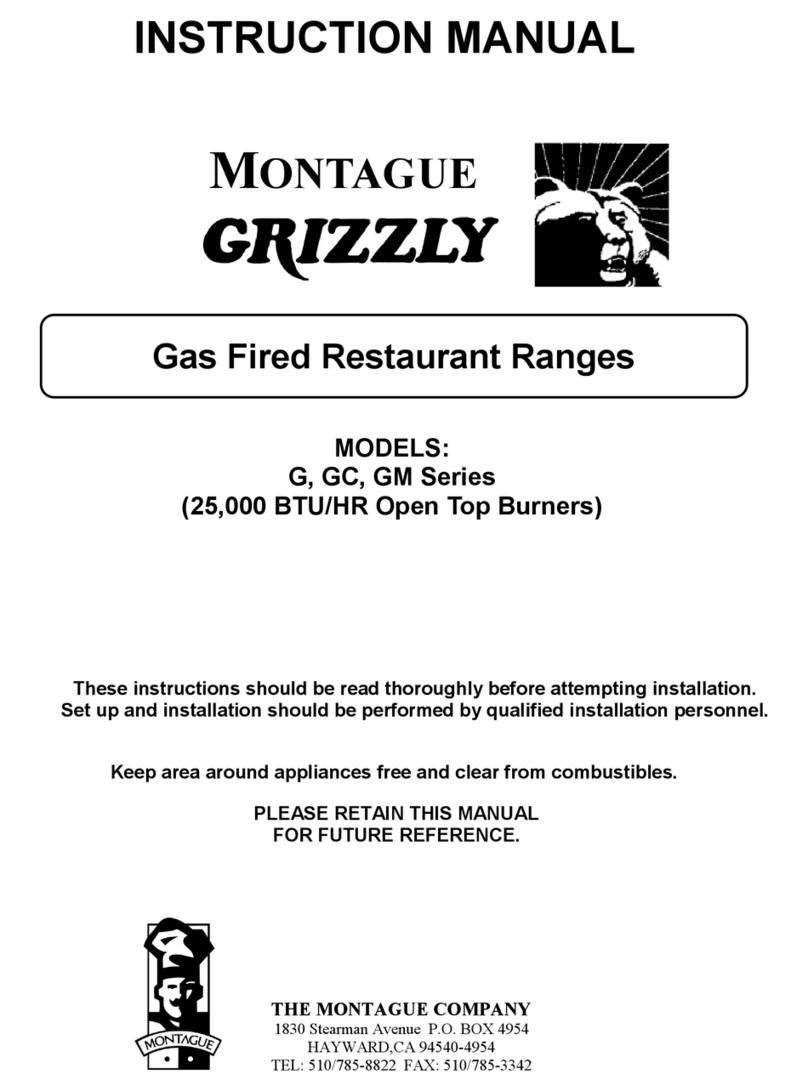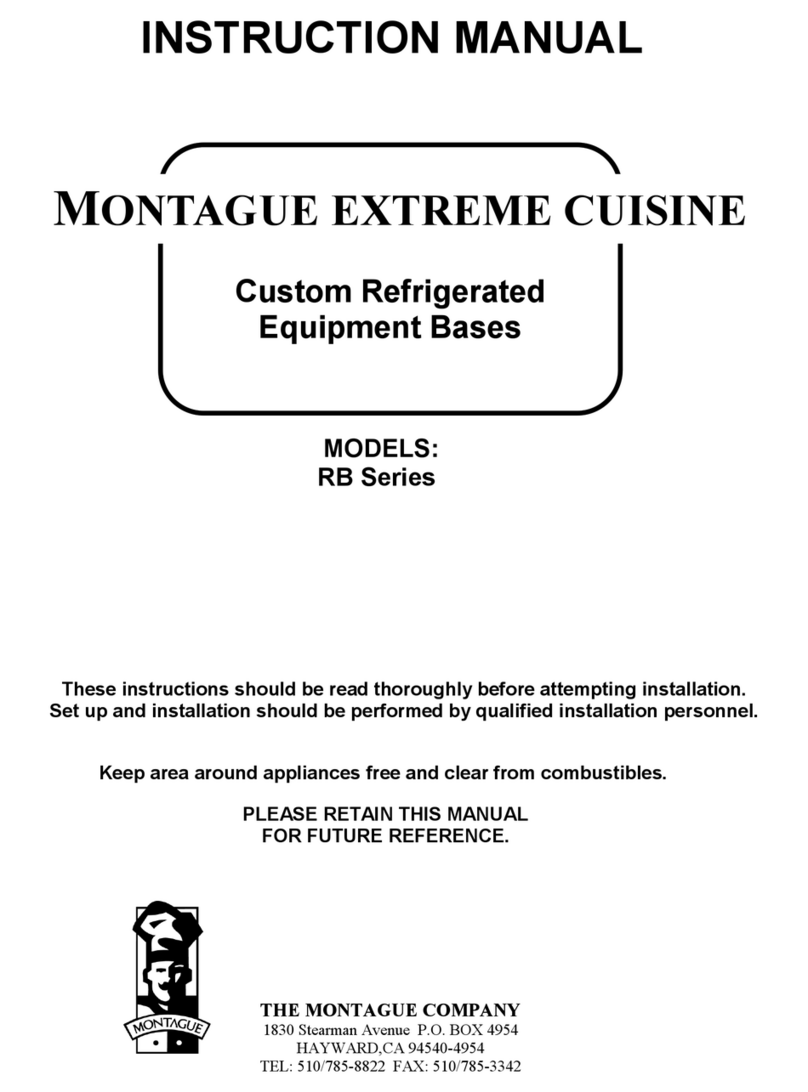
6
CAUTION
Provisions must be made to assure
adequate air supply to unit for proper burner
operation.
CLEARANCES
Adequate clearance must be provided in the
aisle, side and back to allow the doors to open
wide enough to remove the racks and for
service. Adequate clearance must be provided
for air clearance.
A minimum of one inch (2.54 cm) clearance
must be maintained behind the motor to provide
air circulation and motor cooling.
The following is the minimum clearance from
combustible material and noncombustible
material.
Location Combustible
Construction
Noncombustible
Construction
Back Wall 2‖ (5.88 cm) **0‖ (0 cm)
Left Side *6‖ (15.2 cm) 0‖ (0 cm)
Right Side *6‖ (15.2 cm) 0‖ (0 cm)
With 6‖ (15.2 cm) legs: Suitable for installation
on combustible floors
Without legs: for use only on noncombustible
floors.
Counter model: For installation on non combus-
tible counter only.
*15‖ (38.1 cm) when installed with 30,000 BTU/
HR burners.
**2‖ (5.88 cm) for convection ovens.
VENTILATING HOOD
The range(s) must be installed under a properly
designed ventilating hood. The hood should
extend at least 6‖ beyond all sides of the unit.
The hood should be connected to an adequate
mechanical exhaust system.
Information on construction and installation of
ventilating hoods may be obtained from the
―Standard for the Installation of Equipment for
the Removal of Smoke and Grease Laden
Vapors from Commercial Cooking Equipment‖,
NFPA No. 96-1987, latest addenda, available
from the National Fire Protection Association,
Batterymarch Park, Quincy, Ma 02269.
It is also necessary that sufficient room air
ingress be allowed to compensate for the
amount of air removed by the ventilating system.
Otherwise, a subnormal atmospheric pressure
will occur and may interfere with burner
performance or may extinguish the pilot flame.
In case of unsatisfactory oven performance,
check the exhaust fan. Make sure it is in the ON
position.
ASSEMBLY
1. Uncrate range as near to final location as
possible. Remove all shipping wire from
burners and all packing material and
accessories from oven interior.
2. Screw the adjustable feet of the legs in all
the way. Then tightly screw the complete leg
assembly into the mounting holes at each corner
of the range. If the unit is intended for curb
installation, no legs are provided. The curb must
be noncombustible material.
3. Install door handle and secure with screws
that are provided. Observe ―UP‖ marking on
handle for correct orientation.
4. If top castings are removed, identify castings
so they are replaced in the same position
and on same range as when received from
the factory.
SETTING IN PLACE
Battery Arrangement
Floor mounted Ranges:
1. Place the first range in the exact position it
will occupy in the battery.
2. Using a carpenter’s level, level range from
front to rear and side to side.


































